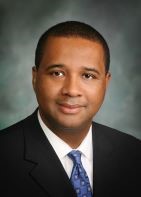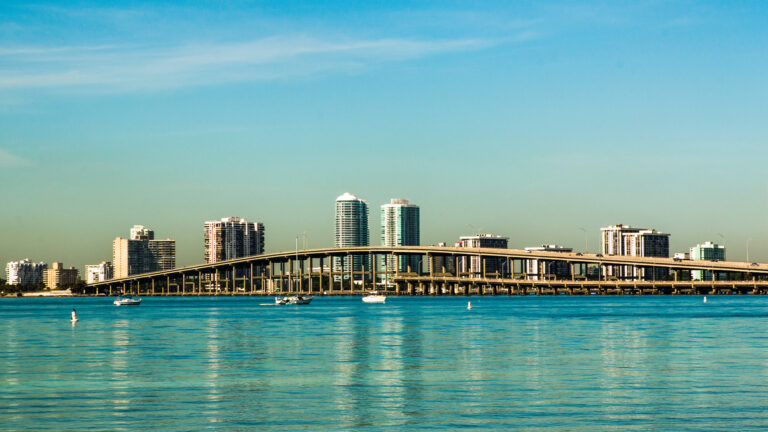Listen to this interview on Spotify
Below you can read the transcript and/or watch on YouTube:
Video Transcript:
Christine Giordano: Hi,
I’m Christine Giordano with Markets Group, and I’m here with Lorenzo Newsome,
who is effectively the Chief Investment Officer or the Pension Investment
Officer of the Police and Fire System of the City of Detroit. That’s a $2.8
billion fund.
If you’re familiar with Detroit, you know that they filed for
bankruptcy in 2014. The city had not made any pension payments until June of
2024. That’s when the city made its first pension payment in about 10 years.
Lorenzo here took the helm two months afterwards in August.
We’re going to hear
how he’s holding up the sky in Detroit or as a team of one for this pension
system. It’s actually done pretty well. Lorenzo, welcome.
Lorenzo Newsome: Thank
you, Christine. Thank you for having me.
Giordano: Pleasure.
We’re also here with Bruce, who’s been at the City of Detroit for quite some
time. He’s in the Communications Department. He might chip in and chime in on
occasion for the information historically that will aid this amazing story.
Welcome, Bruce.
Bruce Babiarz: Thank
you.
Giordano: Lorenzo,
when you came to Detroit, what was your background?
Newsome Historically,
I’ve been a institutional money manager, primarily on the fixed income side,
high yield and investment grade, and all types of structured product. Also did
a stint in regards to risk management as well. My background is primarily fixed
income with risk management.
Giordano: When
the City of Detroit hadn’t made a contribution for 10 years, how did that
affect the pension fund?
Newsome: The
pension fund has performed very well over time. The most recent one-year period
ending fiscal year June 2024, their pension plan earned 9.85% gross of fees.
The three and five and 10-year numbers are very, very strong as well. Those
numbers rank us in the top 5% of all public plans, gross of fees. That’s over
nearly 500 plans. The fund has performed very well historically and continues
to do well.
Giordano: What
is the secret to it having done so well and flying with a very small office,
sometimes only an interim chief investment officer? How did it function in that
capacity?
Newsome: When
I came on board, it was in good hands. Woody Tyler, the interim chief
investment officer, he actually was on the investment committee before he
stepped in to help the plan in regards to overseeing the fund while an
investment officer was selected. He did that for nearly two years and did a
great job. We have a very strong investment committee, a very intelligent and
knowledgeable board, a very strong executive director.
It’s a very, very good team that we have here. When I came aboard,
things were moving along very well. We have very good consultants. Our full
retainer consultant, Wilshire, is very active in what we do. Hamilton Lane,
which is our alternative consultant for private equity. Then we have ORG for
real estate.
It’s a small staff, but we have a lot of people working together and we
all have that same goal and it works well.
Click Here for More Information
Giordano: What’s
your funded ratio at this point?
Newsome: Funded
ratio as of last year was nearly 73%, 72.4 to be exact. As of June 2023, we
won’t get this fiscal year numbers until the end of the year, early January.
Giordano: When
the city did make a contribution this year, how much was it?
Newsome: That
contribution was nearly $90 million, $89 million.
Giordano: That
might’ve boosted the funded ratio quite a bit.
Newsome: Everything
helps a lot. You never turn down the money coming into the plant.
Giordano: You’re
hiring, though. You’re not always going to be a team of one?
Newsome: No.
I’m looking to hire an investment operations analyst to assist with some admin,
operational things that go on, and also to work with me side-by-side to help
with some of the asset allocation, talking with managers, presenting things for
our board, getting those documents prepared. This person can really grow into a
very strong individual that could be my right-hand person.
Giordano: It
sounds like this role is going to expose a person to just about every aspect of
becoming, perhaps, a future CIO.
Newsome: Yes.
It’ll take some time, but this person will get their hands involved and be able
to see and sit at the table where in other institutions they wouldn’t have that
opportunity to see how the entire plan works from A to Z.
Giordano: Makes
sense. What qualifications are you looking for?
Newsome: [laughs]
We’re still working on the job description, but someone with an undergraduate
degree, four to five years of experience, of just work experience primarily in
a financial type institution. Someone that knows broadly various asset classes.
It will be a lot of teaching going on. Just someone that has interest and
enthusiasm for the profession.
Giordano: Makes
sense. Now that you’ve taken the helm, what are some of your goals or the
changes you might be making to this plan?
Newsome: As
I mentioned before, the plan has been performing very well. My early things to
do are just getting an understanding of the portfolio, getting to meet the
managers, understanding the key metrics from a risk-reward standpoint that we
have from asset allocation, getting to work with our stakeholders and really
understand their wants and needs as well. The stakeholders, I mean our
investment committee, our board, our executive director, and just get their
feel on what we are trying to achieve. Everything we do is long-term for our
beneficiaries and the people that are enrolled in the plan.
Giordano: What’s
your approach to the different asset classes within the plan? The commodities,
the, perhaps, infrastructure?
Newsome: The
approach, we have a four-prong or four-pillar type of approach where we have
growth assets, and we have defensive growth assets, and we have just straight
defensive assets, and then we have inflation-sensitive assets. Within growth
assets, that includes US equities, non-US equities, and private equity. That’s
the growth engine that we have.
For defensive growth, we have a minimum of all type equity strategy,
private credit, high yield, short-duration high yield, that sort of thing
there. For defensive assets is investment grade, fixed income, and cash. Then
for our inflation-sensitive assets, we have midstream energy and commodities
and private real estate for an inflation hedge. Those are the big broad
categories that we have, and underlying those strategies and asset allocations,
we have very good managers, investment managers managing those particular
subcategories.
It’s weighted where giving the dual type of conflicting of liquidity
versus growing the plan over time, you have to take both of those into
consideration at the same time. We have a good mix where our portfolio is
liquid enough to make sure we are able to make our monthly payments to our
beneficiaries, but also thinking longer term, 5, 10, 15 years down the road, to
grow the pension plan and have to have strong returns for the future.
Giordano: How
much of your portfolio is liquid?
Newsome: We
probably have, if you count the defensive part, which is core fixed income and
cash, that’s about 18%. The US equities are liquid as well, but they have more
volatility than core fixed income has. A good portion, probably 50% of our
portfolio is technically liquid. What my definition of liquidity is probably
the defensive assets, and that’s about 18%, 19%.
Giordano: Do
you have a view on ETFs or passive versus active investing?
Newsome: We
do have index products in our portfolio, primarily in the large cap equity
area, where we feel that excess returns that are not alpha-generating can be
done with those index products as opposed to, and at a lower fee base. We use
index products for that. Most of the other asset classes are actively managed,
but for ETFs, that’s an area that we are looking into. Primarily, as I
mentioned before, we do have a concern with liquidity, as a lot of other public
pension plans have.
With that, with interest rates scheduled to decline over, let’s say,
the next year or so, we were able to sit in cash at 4.5%, 5%. A year from now,
we won’t be able to sit in cash 4.5%, 5%. That may be 2.5%. What do you want to
do then? You don’t want to have that type of cash drag. What I’ve been working
on is using ETFs to replicate our overall portfolio, given the same risk-reward
characteristics, being very close to the efficient frontier.
Now we can have cash that has daily liquidity
but earning the same type of return as the overall portfolio. That’s
something that I’m working with, has been introduced to the investment
committee and has been well-received. We’re still working through the details,
but the strategy has been accepted and embraced.
Giordano: Was
that a hard thing to convince the board? Because I think your highest returns
in the past have been what, private equity and real estate?
Newsome: Private
equity definitely has historically has been just as an asset class. It hasn’t
been that difficult. Didn’t need to convince. It was just something that needed
to be done. This was a way where it made a lot of sense. For me, not being a
traditional person in a chief investment officer, pension investment officer
position, I’m looking at things, I think, from different viewpoints, a
different lens.
Most allocators have not really managed money historically. Most have
either come from the consultant side or come up through a pension plan and
grown there. For me, coming in with skill sets, but just coming in with a fresh
approach, that seemed like a logical first step to use those ETFs to solve some
of the problems we have with possible liquidity.
Because you want to still be in those alternative asset classes, but
they have lockups, you have your J-curve. You won’t see returns and
distributions ’till five or six years later. We still have to be aware of if
there’s a market downturn, the equity market will go down and the only thing
that you can sell are the public assets. That’s a situation where using ETFs to
give you a similar look and feel for a portion of your portfolio that you may,
over time, may need to liquidate to some degree and still give you the similar
type returns, I think is an approach that really needs to be looked at more.
That’s something that we’re going with.
Giordano: As
a former bond expert, having come from bonds, I’m guessing risk control is in
your DNA.
Newsome: [laughs]
Yes. Being a bond guy, yes, but also along with having a CFA charter, I have
the two globally recognized designations in risk management. I have been a risk
manager for a platform of hedge funds before and a senior financial risk
officer for OFHEO, the former regulator of Fannie and Freddie. Risk management
is in my DNA. We don’t just talk it here at the plan. We actually implement it.
Some of the metrics that putting in place, we’re able to do a lot of stress
testing, what-if analysis, and really calculate where we are at any point in
time in the plan. Risk is very important to us.
Giordano: Interesting.
Any other approaches that you take of somebody who has a lot of investing
experience to your fund? Where do you apply it? I know you went into it
already, but I’d love to hear more.
Newsome: I
apply it in situations where I’m really trying to understand the strategies of
our managers and then understand the strategies of asset firms that are trying
to solicit us as well. To really, to do that, I really want to break it down
very simplistically. I look at everything from a free cash flow standpoint, a
discounted cash flow standpoint. Whatever strategy it is, it’s like, work with
me to understand how these cash flows work.
Let’s put a risk premium on top of these cash flows
to adjust for credit risk premium, liquidity risk premium, just
industry risk premium, and make sure that we are being appropriately
compensated for that. To me, that’s the important thing. When I talk with asset
management firms, we really get down into the weeds to really understand their
product and how these cash flows come, and then to put the proper risk premium
on top of that and discount it back and see if it makes sense for us.
Giordano: People
are discussing that we are in a new economic regime. Are you seeing things
change within risk premia, within perhaps fund structures, fee structures
within this newish economy?
Newsome: We
are in a situation where spreads are tight in regards to fixed income,
extremely tight in the investment grade and the high-yield space. Question. Are
you getting paid enough to take that risk in that asset class as opposed to
being in something else like treasuries? It’s a situation where you could take
all of the asset classes that I mentioned early on and everyone has a positive
story to tell. It’s almost like a poker game where everyone is in and they’re
putting all the chips in, but somebody really doesn’t have a good hand and we
don’t know what that is.
Us being the other player in this hypothetical situation, we want to
make sure which asset class is bluffing or which asset class really has a good
hand. That’s the key to being an allocator and running a public pension plan is
doing that. This economic environment that we’re in, there are geopolitical
risks that are going on. There are asset classes that have been running
extremely hot.
A lot of momentum is going into it where, oh, should we get out of
growth and technology and move more into value? There’s a lot of things going
on. It’s like we know this can’t continue on at this level and one of these
asset classes are bluffing. It’s like a poker hand. Are we going to call that
asset class a bluff or are we going to continue and ride it along? That’s where
we are in regards to figuring out what’s going on. The way we have our
portfolio diversified in those four pillars that I mentioned earlier, I think
we’re able to handle any challenges that come along.
Giordano: Of
course, it begs the question, knowing that perhaps people at the table are
bluffing, as you put it. I love that analogy. How do you do your due diligence
with a tiny team?
Newsome: We
have a strategic plan here. We are here for the long term. Like I said, when we
make changes to the portfolio, it’s for 5, 10, 15 years out. Unless things are
really trend and directional, we’re not in the weeds every single day. We take
time to work very well together with our investment committee, our board, and
our executive directors. We all have a shared understanding. Part of that
understanding is, communication, transparency. The dashboard is one thing that
I use to put in place to make sure we’re all marching to the same drum in
regards to our view.
Our consultants understand we have a view as well as they do. For me,
being a bond guy historically, I’ve always looked at starting from a global
macro type of viewpoint. It’s more of a top-down, bottom-up approach. Top-down,
big macro view, and then bottom-up looking at individual securities. I’m still
doing a macro view, the top-down, but the bottom-up is not individual
securities, it’s individual asset
classes and asset managers that we’re looking at from the bottom up. I
still keep the same process and same philosophy, just applying it a little
differently.
Giordano: I
understand. I’m guessing you stick with the tried-and-true managers who you can
maybe rely on over the years have proven their case, have a long history of
performance?
Newsome: Yes.
We have a good stable of managers now, but we’re always looking for that next
group that not necessarily next generation, but there are a lot of good money
managers that have spun out of other firms I have experienced. Their only
disadvantages may be lack of track record or small staff or those types of
things. If it’s a good strategy and they can be nimble with it, and if it fits
in what we are doing here from a longer-term strategic plan, we’ll definitely
take the time to understand them, get to know them. If and when an opportunity
comes up, they can be placed in the portfolio. Like I said, I’ve been on the
other side of the table, so I know how that feels.
It is important that I get them, I get where they are. I’ve been in
smaller firms and I’ve been in larger trillion-dollar firms as well. I’ve seen
the gamut and there is good talent across the board, regardless of the size of
the asset manager.
Giordano: It’s
nice that you have such a firm background and foundation in all of this, but
perhaps you’re one of the few people who could come into this position and be
that person, that team of one right now. I know you’re hiring, but it’s
extraordinary.
Newsome: It’s
really not a team of one. Like I said, we really have a strong investment
committee and a strong board. Most of our investment committee are or have been
investment professionals themselves. It’s a strong team. It is a strong team,
yes.
Giordano: Did
you say you have an investment committee and an investment board, too, do you
think?
Newsome: Yes.
Giordano: Ah.
Bruce: If I
may just jump on that, Christine.
Giordano: Yes.
Bruce: The
Police and Fire Retirement System Board of Trustees is a 16-member board made
up of half of city officials, half police and fire officials. Coming out of
bankruptcy, the court ordered the establishment of an oversight investment
committee, which was created and appointed by the then sitting governor, and
that investment committee is still in place to this day.
The investment committee hired Lorenzo, but they work hand-in-hand with
the Board of Trustees and work, as Lorenzo mentioned, they work very well as a
team. It’s really come a long, long way from bankruptcy when there was
litigation of the largest bankruptcy in US history, municipal bankruptcy, to
all parties working collaboratively to the benefit of the beneficiaries of the
system.
Giordano: Thank
you, Bruce. Appreciate the background. Lorenzo, you mentioned the dashboard.
You created a special dashboard to communicate strongly with your board and
your trustees. What was key to that?
Newsome: A
lot of times when you have investment meetings, whether you’re an asset manager
or a pension plan, you have a meeting and then you come back later, following
two weeks, following a month. You really can’t remember in detail what the view
was two months ago. What I did, I created an investment dashboard to let us
know over the past four months, the investment risk-adjusted drivers that are
important to our plan.
I color-code them red, yellow, and green. It’s a visual, as well as
there’s text inside the boxes. Simplistic enough, but detailed enough that
everyone understands where we are, where we stand, and how a factor may have
changed from red to yellow to green
over a full enough period of time, and we can see that transformation
in the visual standpoint. That communication is well received by the investment
committee, and they get that once a month, so they know where we are.
When I talk with our consultants, they know where we are, and we can
have that conversation from there. The qualitative things that are written
inside the box of the various factors, they are just factual information,
whether it’s consumer sentiment, did this this month versus last month, it’s a
fact, but the color coding and some of the narrative that I write in there,
when we get down to a viewpoint, a market view, or a tactical thing that we see
that we can use or possibly utilize in the next three to six months, maybe for
using cash or maybe deploying resources to another manager in another asset
class, those things are embedded in the investment environment dashboard.
There are 15 factors in the dashboard, and they are big, broad
categories. Didn’t want to get it too micro-defined, but big enough categories
that we can see trend and direction, and we can have a good, strong
conversation as an investment committee, as a board, to really have good
discussions. When we meet the next time, we still have that and have another
month attached to that. It’s like a rolling four-month period of time, and it
works very well for us.
Giordano: What
would be an example of what red would be?
Newsome: Right
now, red is political climate. Red is the US housing market. Red is volatility.
Those are red factors that we have as a driver.
Giordano: Are
those risks? [Is the red color symbolic of] something that you want to pull the trigger on, or that’s in early
stages?
Newsome: Could
be an opportunity, or it could be identifying risk as well. It’s just to let
everyone know that this particular investment driver has changed or is this
level. It’s red. Red could mean an opportunity. Red could mean maybe a possible
tactical shift in asset allocation. Red could just mean a discussion. If none
of those drivers change and you have a change in the market environment from a
short-term standpoint, I can say, have any of our long-term drivers changed?
Our folks can go down and say, no, they haven’t.
We put this together, given this view of the market and the way we want
to position the portfolio. If none of our drivers have changed, then some of
the noise that’s in the market on a short-term day-to-day basis or even weekly
basis, we don’t have to concern ourselves with as much if none of our drivers
have changed. To me, that allows us to be more strategic, more long-term, more
trend and directional. To me, that’s important for a public pension plan.
Giordano: Sure.
I just wanted to, for the sake of other allocators, this dashboard is very
interesting to me. Just wanted to know, red, yellow, and green, where do you
categorize that? What’s yellow? What’s green? Is there a case scenario in which
something went from red, yellow, to green? Is green, go ahead? Is red, stop?
I’d love to know.
Newsome: It
depends on our view of the market. For example, a consumer’s sentiment in June was yellow, and it got positive in July and August
and turned green, and now it’s back to yellow again. Those things change and
evolve over time, but what it really does is it peaks a discussion. It has
everyone on the same page and has everyone having that same base of knowledge
of information, and we can have good discussions with our board, our investment
committee, and our consultants.
Giordano: Nice.
Wonderful. Anybody you’re looking to hire at this point? Any managers?
Newsome: No,
we’re still looking through the stable of managers that we have right now. I’m
mostly through that, but my door is open to have conversations with new
managers that want to possibly be a part of our plan, given if they fit what we
are working with. To have a dialogue and get to know them over time.
Giordano: Makes
sense. Thank you so much for your time. I really appreciated this interview.
Any last tips for allocators?
Newsome: I’m
learning as I go along, so I will probably be more open to listen as opposed to
give tips right now. I’m just trying to continue the great job that has been
done and go forward from there.
Giordano: Oh,
that’s nice to hear. I know being in Michigan, you’re in a wonderful state for
idea swapping amongst some terrific CIOs.
Newsome: Oh,
yes. It’s a great investment community here, and it’s a lot of great things
going on within the city. I’m really, really enjoying it. Thank
you, Christine.












